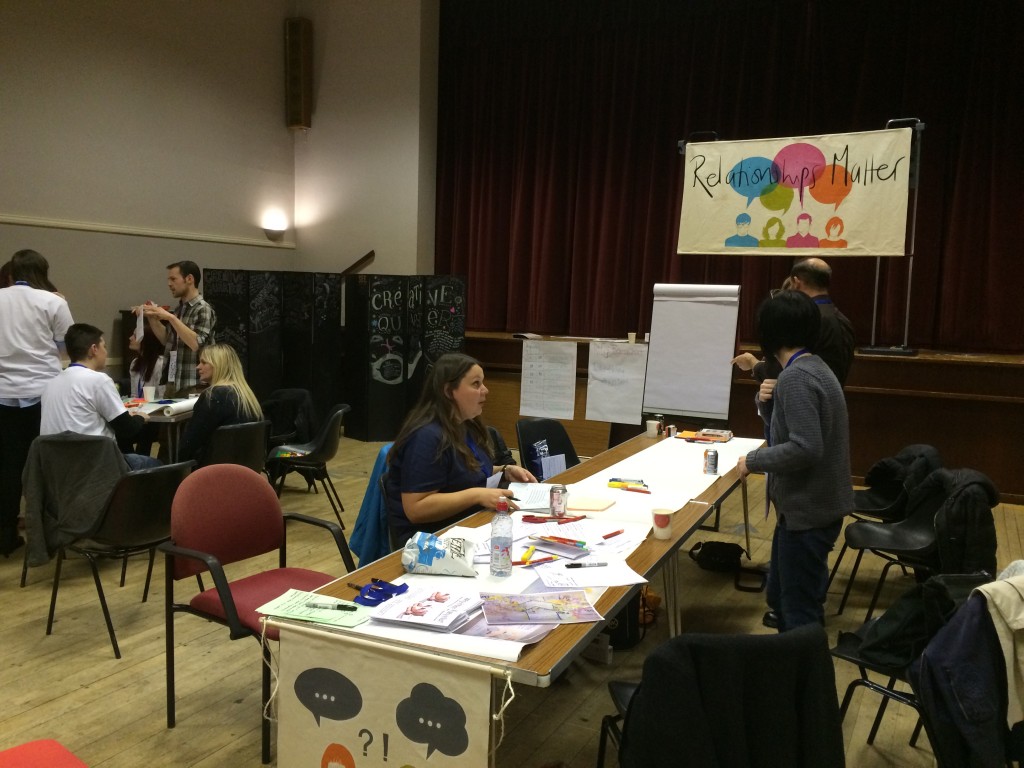Guest blog from Rikke Iversholt: Facilitator of the Care Visions Group.
The Care Visions group at the Relationships Matter Jam was addressing the issue of judgement from others that staff experience when they keep in touch with young people who have left their service. Over the last year, the group has been working together in a new service, Why Not?, which has done away with the break in connection between key workers and young people when they move away from the services. Young people now identify the workers they wish to remain in contact with and be guided by in their adult lives. When accepting their role in the continuation of the relationships, workers commit themselves to being a friend to the young person outside of work, working hours and salary. This approach requires workers to make moral adoption part of normal practice.
During the Understanding phase the group discussed how within their organisation it is acceptable to show love to the young people, however, this was met with questions about appropriateness from local authority social work staff. The group felt that currently friendship between young people and workers is a taboo outside of the Why Not? service, and that although staff were predominantly met with understanding within the organisation, there was scepticism about the new approach from other agencies, and friends and families of staff.

In the Develop phase of the day the group explored options for how the use of evaluation and evidence could educate others of the philosophy and principles of the Why Not? approach: love, family and friendship. The group agreed that an independent and detailed examination of Why Not? would lead people to understand and see the impact it makes on young people and workers, and demonstrate the fundamental issue of Why Not?: meeting young people’s needs. The focus therefore shifted from changing the minds of identified sceptical individuals to a wider perspective embracing the need to evidence a model of undisputable positive value, based on strong moral obligations, which, in turn, should address the uncertainty felt by outsiders, however on a larger scale.
The group had identified that although there was nothing they wanted to change about the approach of the Why Not? service, they did need to plan for a period of intensive work to demonstrate outwardly the principles and benefits of the approach. The group then collectively created a programme of work which would build evidence, evaluate evidence, and establish a best practice model for working with young people in institutional care.
- Continue making connections and increase the life of the service (engendering change and expanding the service)
- Continue professional networking and promote internal service ambassadors who will live the values of ‘moral adoption’
- Secure funding for a CELCIS evaluation of the service (creating a model of good practice that can transition to work with children under 16 years of age, and be transferable to the wider sector)
- Continue to gather internal data, both soft and hard
- Individually, and though evidence, challenge the perceived risks of Why Not?
The group finished the day with a pledge to address each of the five aspects of the plan. CELCIS was consulted during the day and further meetings are scheduled. Funding for evaluation will be sought internally, as will the request for ambassadors.
